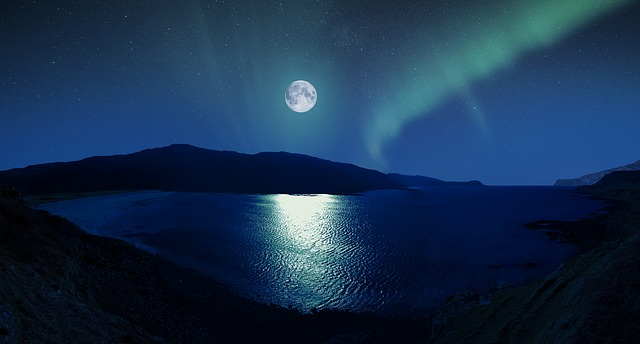The Arctic Ocean has been releasing enormous amounts of methane gas, a powerful greenhouse gas that impacts the global climate, for thousands of years. But in a recently published paper, scientists noted that the Moon, the only natural satellite of Earth, is probably also contributing to the methane emission activity.
The world's oceans are large reservoirs of methane, which is the second biggest contributor to human-caused global warming after CO2. According to climate experts, the gas is stored in the form of solid methane hydrates in the seafloor and the emission can cause the ocean warms up. But the emission of methane into the atmosphere also somehow managed by the Moon, said a new study which was published in the journal Nature Communications.
Moon's Role

Since the formation of the Moon, it has always influenced the activities of Earth in several ways. It helps the blue plant's climate to be stable by controlling the wobble on its axis and the tides on Earth. But its ability to control the emission of methane, which is more efficient at trapping heat than other greenhouse gases, in the Arctic Ocean was unknown to scientists till now.
However, the new findings reveal that the Moon-controlled tides can work to release methane from the Arctic Ocean's seafloor. Andreia Plaza Faverola, the co-author of the study who called the findings "fascinating" said that Earth systems are interconnected in ways that "we are still deciphering, and our study reveals one of such interconnections in the Arctic".
According to him the research, conducted by a team of experts from the University in Tromso and The Arctic University of Norway, suggested that the Moon causes tidal forces, the tides generate pressure changes, as well as bottom currents that in turn shape the seafloor, and impact submarine methane emissions. This is the first time scientists observed this process in the Arctic Ocean.
As per the co-author Faverola, the team of European researchers noticed that the methane accumulations are vulnerable to even slight pressure changes in the water column. "Low tide means less of such hydrostatic pressure and higher intensity of methane release. High tide equals high pressure and lower intensity of the release," he said.
The Research Process

The scientists used a tool called piezometer, a device used for measuring water pressure, to conduct the observations. They placed the device for four days in the sediments of the western Svalbard margin of the Arctic Ocean and monitored the changes of water pressure, as well as its temperature inside the pores of the sediment.
After they studied the collected data the team of researchers found that the presence of methane increases and decreases along with the changes in tides. According to their understanding, the present-day gas emission which scientists have calculated till now in the Arctic may be underestimated.
Jochen Knies, the co-author of the study, said what they found was "unexpected and the implications are big". According to the expert, the findings were made at the deep-water site. While small changes in water pressure can increase the release of methane, the gas will still stay in the ocean because of the water depth. "But what happens in shallower sites? This approach needs to be done in shallow Arctic waters as well, over a longer period. In shallow water, the possibility that methane will reach the atmosphere is greater", added Knies.









